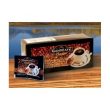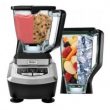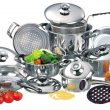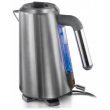If you are a fan of coffee then no doubt you will have tried a range of the different ground coffee products on the shelves. But any coffee connoisseur will tell you, the best way to enjoy coffee is to use real beans. However when you come to buy coffee beans there are an eye-watering variety so here we are looking at a few basics of the best coffee beans to help you on your way.
Varieties
Coffee plants come from subtropical areas of Asia and Africa but are not also grown in Central and South America. The berries are harvested and the flesh removed to leave the seed, which is a grey-green colour at this stage. In this form, it is very shelf stable and is usually shipped like this.
The beans of the coffee plant come in different sizes and shapes and the flavours they produce are also different. The area of the world they are grown in has an effect on the flavour, much like wine. There are two main categories: Arabica and Robusta.
Arabica is considered the superior of the two because it has a delicate flavour and also is lower in acidity. It tends to be grown at higher altitudes and is more costly to grow as well as being more labour intensive and having a low plant yield. This is why it is the more expensive option.
Robusta tends to be a harsher, more acidic flavour as it has higher levels of caffeine. It grows in hotter climates, at lower altitudes and needs less moisture. Because of this, it sells at a lower price. Most mass-market commercial beans use this variety.
Roasts
Once the coffee has reached its destination, it is then roasted using a dry heat and constant movement. There are a range of roasts from light golden brown to almost black and the variations of the roasts gives the variations of the flavours. They are general grouped into three categories: light, medium and dark.
Light roasts are the more delicate flavours and are the more acidic. The gentle roasting allows the original flavour to come through so high quality beans are often light roasted for this reason. The beans appear dry, as the bean hasn’t reached the heat point where oil is extracted. Light roasts include: Cinnamon, American, Half-City and New England roasts.
Medium roasts will have a chocolate brown colour, a full flavour and a dry surface. They will be less acidic and have a slightly sweet, toasty flavour. This is the most popular roast for the major commercial brands of coffee. Medium roasts include: Full City, Breakfast and Regular Roast.
Dark roasts are roasted until they begin to caramelize and when the oils are rising to the surface of the bean. Sometimes the beans have a shiny or oily appearance and the flavour is strong, smoky and sometimes a touch spicy. There is little of the original flavour left so the lower quality beans are used for this roast. They are often described as bitter, despite being lower in acidity than the other roasts. Dark roasts include: French, Viennese, Italian and Espresso.
Blends are where roasters will mix together two or more roasting levels to give a different and more complex flavour than achieved by a single roast.
Decaffeination
Caffeine is often considered the most important part of coffee and the amount of caffeine in a cup depends on the type of bean and the brewing method used. Most of the caffeine is removed during decaffeination processes but traces still remain. The international standard is that coffee is called decaffeinated if it has at least 97% of its caffeine removed.
There is a range of methods to remove the caffeine from the bean including a simple soaking in the water that filters out the chemicals. This liquid is then mixed with other ingredients to remove the caffeine and is reintroduced to the bean. This means all the other benefits of the coffee are still present, apart from the caffeine.
There are also researchers working on producing a type of coffee bean that doesn’t have caffeine in it, therefore removing the need for any processing, saving costs and keeping the original flavour intact.










